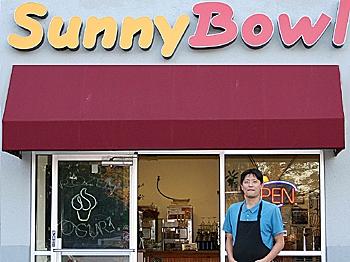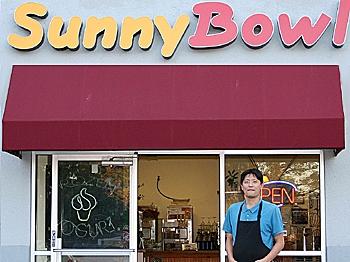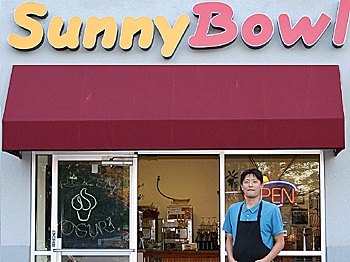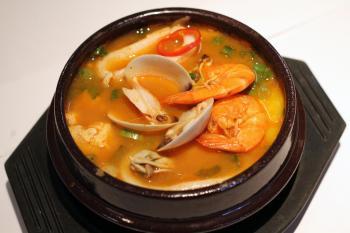I searched the Internet for Korean restaurants in Mountain View and stumbled onto this restaurant that has received close to 5 stars from many online reviewers. Most people who have eaten there have said, “It is fresh, healthy, cheap, and delicious.” I called the owner to ask if we could interview him to find out what the people are all raving about. The restaurant is surprisingly small, with only about 15 small tables. I found it was small and cozy.
The owner, Daniel Choi, ran a Korean restaurant in Hawaii for ten years. He came to California for his children’s education. His restaurant in Hawaii was a full-blown Korean restaurant that had many kinds of Korean dishes. But here in the California, he found himself in a difficult situation. The kitchen was small, and the cost of preparing Korean dishes was high. A typical Korean meal usually has five or six side dishes. These are called banchan and they require food items that are typically labor-intensive and expensive to serve. He thus decided to specialize in just this one dish, bibimbop.
Bibimbop is a very popular Korean dish that basically has five or six kinds of cooked vegetables, chicken, or beef with eggs on top and rice underneath. The dish is topped with hot gochujang sauce and sesame seed oil. Gochujang is a spicy fermented chili and soybean paste. This is one of the fundamental sauces used in Korean cooking. This is the sauce that gives Korean food a red color. One has to mix the ingredients together well with the sauce to get the full effect. It is healthy, delicious, and a quick eat. It has some similarities to Chinese fried rice, which also has rice, chopped veggies, and, sometimes, meat.
The owner, Daniel Choi, ran a Korean restaurant in Hawaii for ten years. He came to California for his children’s education. His restaurant in Hawaii was a full-blown Korean restaurant that had many kinds of Korean dishes. But here in the California, he found himself in a difficult situation. The kitchen was small, and the cost of preparing Korean dishes was high. A typical Korean meal usually has five or six side dishes. These are called banchan and they require food items that are typically labor-intensive and expensive to serve. He thus decided to specialize in just this one dish, bibimbop.
Bibimbop is a very popular Korean dish that basically has five or six kinds of cooked vegetables, chicken, or beef with eggs on top and rice underneath. The dish is topped with hot gochujang sauce and sesame seed oil. Gochujang is a spicy fermented chili and soybean paste. This is one of the fundamental sauces used in Korean cooking. This is the sauce that gives Korean food a red color. One has to mix the ingredients together well with the sauce to get the full effect. It is healthy, delicious, and a quick eat. It has some similarities to Chinese fried rice, which also has rice, chopped veggies, and, sometimes, meat.





